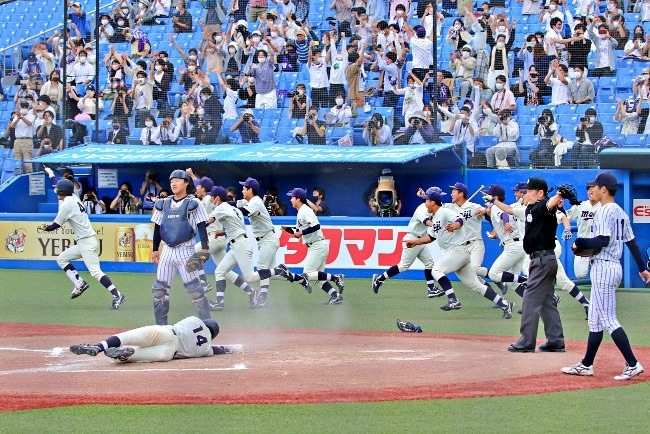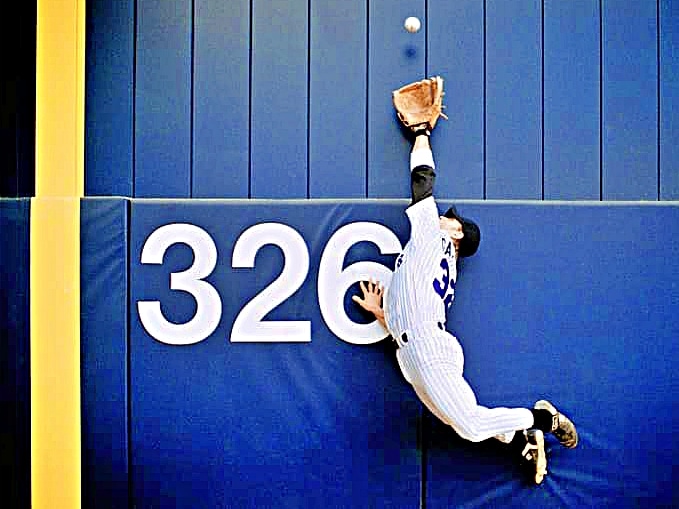The current iteration of professional baseball in Japan – Nippon Professional Baseball (NPB) – started way back in 1950, but one must go way, way back to reach the beginning of the oldest league in Japan.
That would be back to 1925 when the Tokyo Big6 League formed.
Not as well known to foreigners as NPB, the Big6 is comprised of Waseda University, Keio University, Meiji University, Hosei University, Rikkyo University, and the University of Tokyo. These are considered the top universities in Japan, and the competition among students to gain entry is fierce.
The schools’ baseball teams play short Big6 seasons in the spring and fall of each year, with all games played on weekends at historic Meiji Jingu Stadium, which opened in 1926 but is in danger of being demolished as part of a controversial redevelopment plan. Each club plays a short series against each of the others. The first team to gain two victories in a series is the winner and gains a point toward the season standings.
The season standings are decided first by points. If points are tied, winning percentage is the determining factor. If there is a tie in both points and winning percentage, the ranking order of the previous season prevails, except for the top teams, who then have a playoff to decide the champion.
The team with the most series victories is declared the league champion. The spring champion then participates in the All Japan University Baseball Championship Series, while the fall champion competes in the Meiji Jingu Stadium Tournament.
Through the fall of 2023, Hosei and Waseda were tied for the most titles with 46. Meiji was next with 43, followed by Keio with 40 and Rikkyo with 13. The University of Tokyo has never won the championship. Keio is the most recent champion, having defeated Waseda for the Fall 2023 title. Even Tokyo University, which does not offer athletic scholarships and once lost 94 consecutive games, has a following.

The Big6 is a high-quality league with rivalries that draw keen interest. Takahiro Kaneko, a native of Tokyo and a former player in the Australian Baseball League and the Japanese independent pro leagues, has witnessed it first-hand.
“The Big6 is very competitive,” said Kaneko, “They have cheerleaders and cheering squads. Shigeo Nagashima [a third baseman and eventual inductee in the Japan Baseball Hall of Fame] played for Nikkyo, and when he went to the [NPB’s Yomiuri] Giants in 1958, he said that the NPB competition then was not at the level of the Big6.”
Surely, that is no longer true, but it is true that the Big6 remains quite competitive, especially when Waseda and Keio square off. Both schools have histories that significantly pre-date the birth of the Big6 and usually attract the biggest crowds when they play each other. The two first battled each other in 1903; 1906, Waseda became the first Japanese team to travel to the United States for games; and both schools faced off against the University of Washington when the latter toured Japan in 1908.
The Waseda-Keio games “often caused much tension between the student bodies”, and the rivalry was suspended after 1906 “due to overheated cheering”.
Eventually, though, Waseda, Keio, and Meiji put together a league in 1914. Hosei joined in 1917, followed by Rikkyo in 1921 and Tokyo Imperial University – now the University of Tokyo – in 1925, resulting in the formation of the Big6. The league was a factor in the increasing popularity of baseball in Japan prior to World War II and before the nascent professional game started gaining traction. At one point, there was the saying “Speaking of baseball, there are six universities; and speaking of six universities, there is baseball.”

Today, when Waseda and Keio play, classes at both schools are canceled so the students can attend the games. The final week of the season is reserved solely for Waseda-Keio games, which are sometimes even telecast by the Japanese public broadcaster NHK.
“Waseda-Keio is the biggest rivalry in the Big6, in any sport,” says Takumi Fujitsuka, a scout and translator for the Kagawa Olive Guyners of the independent professional Shikoku Island League and a JapanBall tour guide. “It’s a unique atmosphere when they play each other. They compete as universities, also. They have the strongest reputations among colleges in Japan.”
Kaneko added, “These colleges also have high schools and elementary schools, and those players go to the games. It’s a full house when Waseda and Keio play.”
Reportedly, the crowd once even included the Japanese imperial family, which made it to Jingu Stadium in 1994 for a Waseda-Keio matchup.
The Big6 has also had influence in areas other than baseball, “gradually [going] beyond the boundaries of university baseball leagues and [becoming] an indispensable keyword for interactions between affiliated universities . . . Competition between universities has expanded, and in fields . . . such as cheering groups and chorus concerts, mah-jongg league games and school festivals, various human relationships and exchanges have been created in the name of the Tokyo Big6.”
NOTE: For a list of “notable alumni” of Big6 schools, go to this link.
